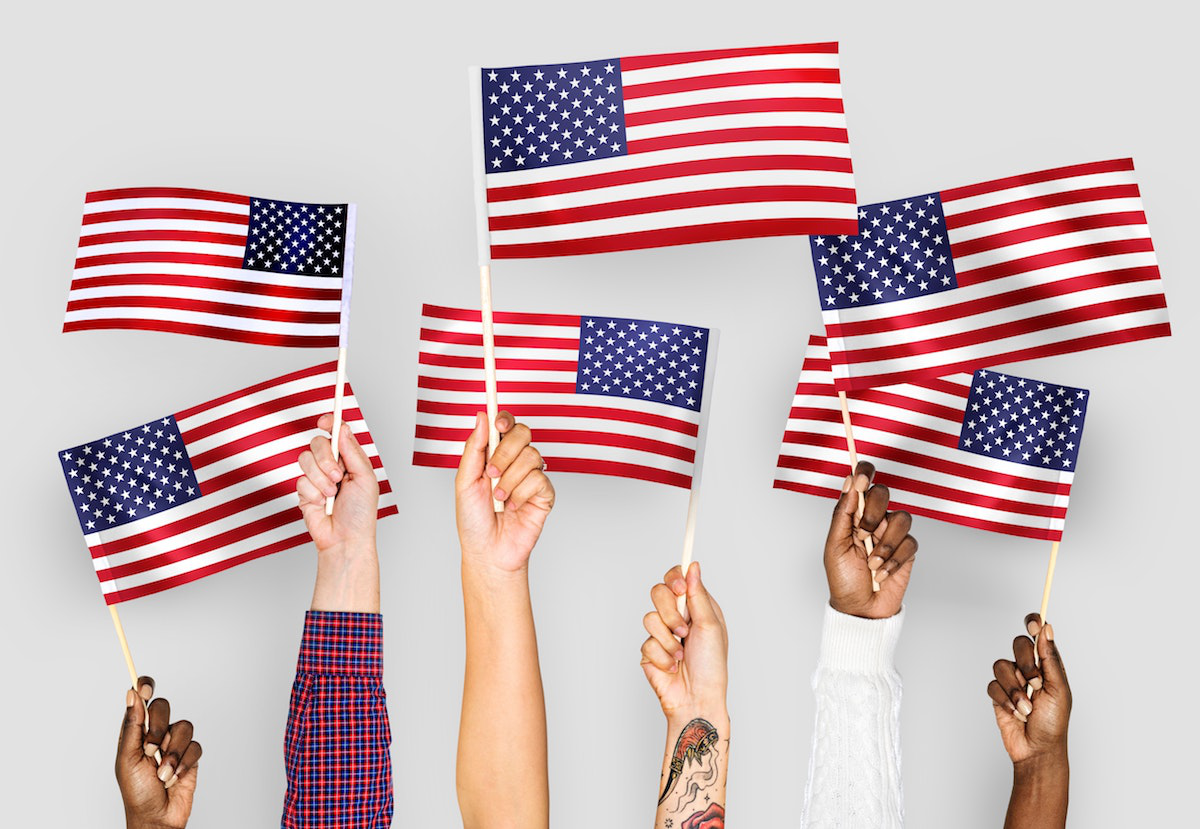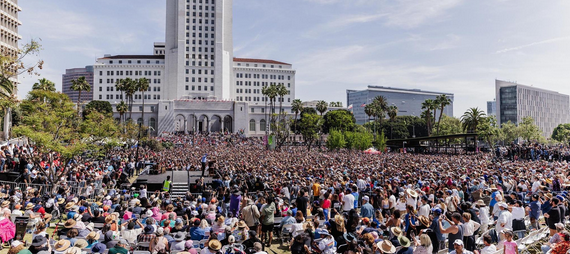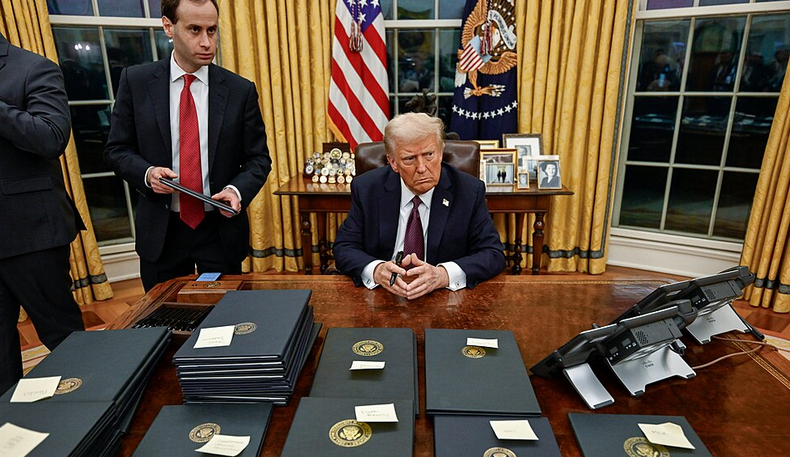Brave soldiers helped defend the democracy they were denied.
[Black History Month]
By 1914, slavery had been abolished by a mere 49 years and African Americans were still treated like second class citizens and plagued by racial terroristic acts at the hands of the white populace.
Despite enduring racial segregation and atrocities, legalized by Jim Crow Laws, thousands of African American men and women served their country during World War I from 1914-1918.
In honor of Black History Month, the National World War I Museum and Memorial seeks to shine a light on its exhibition composed of numerous artifacts from African Americans who served during the so-called Great War. The museum is a non-profit organization located in Kansas City, Missouri, and has been adding to its world-class collection since 1920.
The museum’s senior curator Doran Cart said he specializes not only in the history of the World War I, but of the material culture of all 36 nations that were directly involved in the war. “The people who are directly involved in World War I are gone now. What we have left, for the touchstones are the objects, an object can be anything from a uniform all the way to their pay book, or a photograph. So, it covers the whole gamut,” Cart said. “Objects can be two dimensional and three dimensional—but there are really lasting things that we can hold on to about people who have passed and material culture never stops, as long as we keep producing things [objects] remains long after the humans. That’s a responsibility I really enjoy because I feel connected with those people.”
Although the museum does not have an exact number, Cart said about 300,000 African American men served in the military, both in the U.S. and overseas. There were a few African American women who served in the Navy and were Army nurses, but they did not serve overseas.
The main reason why the U.S. entered the war in 1917, Cart said, was to preserve and to ight for democracy. Even though there was a draft, many African Americans saw the war as a chance to redefine their U.S. citizenship and improve their social, political, and economic status.
“They thought, rightly or wrongly that if they served in the military that would verify them as being United States citizens, Americans, and not segregated Americans, but Americans. That was not always the case in reality,” Cart said. For others, he said, this was “their chance to have an economic base and to earn a living serving in the Army, the Navy, and/or the Coast Guard. They had a long-standing course service in the American military, but this was really seen as a chance to show their place in American society.”
In spite of facing racial discrimination on a daily basis, Cart said there was an overpowering patriotism amongst African Americans, and they really felt that this was their country and if they didn’t serve, then they were not upholding their end of the bargain.
“This really came into play, especially with African American women. There were overwhelming activities on their part in support of the war effort. They created all kinds of organizations. Probably the leader of one of the efforts was a woman named Alice Dunbar Nelson, and she was the recognized leader of the mobilization of African American women,” Cart said. “African American communities overwhelmingly supported the Liberty bond drives to raise funds for the war effort. They worked in the Department of Labor, the National Bureau of War Risk insurance, there was nothing on the home-front that African American women and men on the home-front didn’t serve in.”
While some African Americans viewed serving in the war as a way to redefine their image, some also viewed serving as an act of defiance. “We’re putting on this uniform. This is a symbol of the United States of America and we’re wearing this, [and] we’re going to prove that we can do this. We can, we’re going to prove that we do have a place in defending our country,” Cart said, echoing those sentiments. “I think if that’s really seen as an act of defiance, then that’s exactly what it was. It was a defiance, especially in the south against the segregation that was there.”
In the end, since there was a draft during World War I, Cart said, many African Americans, like other ethnic groups, did not have a choice. They made the best of the situation. “I think there was definitely a thing of proving themselves and proving how they could serve with the best of them, and many of them did. I mean, they’re efforts, and their bravery came throughout America’s effort in the war,” Cart said.
After returning to the U.S. once the war ended in 1918, Cart said African American military men were scorned in many places, even though they were in uniform with their discharge chevron sewn on their left sleeve of their uniform. During what became known as the Red Summer of 1919, when hundreds of Black people across the U.S. were lynched by racist white mobs, Cart said at least 11 of those murdered were soldiers in uniform.
Some African Americans remained in military service, some became expatriates, knowing they wouldn’t be welcomed back home, Cart said. Eugene Bullard, who was a flyer with the French, became famous. “The French didn’t have the same kind of segregation going on, because they had colonial troops who they served with for years. So basically, stayed there and later came back to United States and lived a very unassuming life,” Cart said.
Another prominent expatriate was James Europe, who was a bandleader of an all African American band unit that played all over Europe and really introduced jazz to the continent. He remained in Europe for many years. “They had no desire to come back to the same life they’d have before, but others found opportunities when they came back, especially in industry and in law enforcement and things like that, but I’d say the majority didn’t improve at all,” Cart said.
The museum has launched an initiative asking citizens to submit items from African Americans who served during World War I, in order to expand its already large collection and exhibition. “In the last year, we loaned about a third of the objects that were in a special exhibition to the Smithsonian’s National Museum of African American History and Culture, on African Americans in World War I so we were real proud of that,” Cart said.
In the Smithsonian’s “We Returned Fighting” exhibition, Cart said the museum sent over musical instruments, medical equipment, uniforms, and may other artifacts that match their storyline. The National World War I Museum and Memorial also has an online exhibition that includes many artifacts, including photographs, documents, letters, and other items.
The museum has seven digitized oral histories from African Americans that can be listened to on its YouTube channel. As part of a long-term plan, Cart said there are plan to expand the museum’s collections on minorities, women, and indigenous people who served during World War I.
“We’re looking to really fine tune that or what we say enhance that, because there’s always more information out there. If we thought we had all the information out there, I wouldn’t have anything to do,” Cart said. “So that’s what’s really makes me keep coming to work is that these ideas that the history is there, you just need to dig a little deeper. I’m not saying I’m a spokesperson or anything like that, I simply gather the facts and present them as well as I can.”
For more information about the museum and how to donate an item, visit www.theworldwar.org/support/donate-object.







